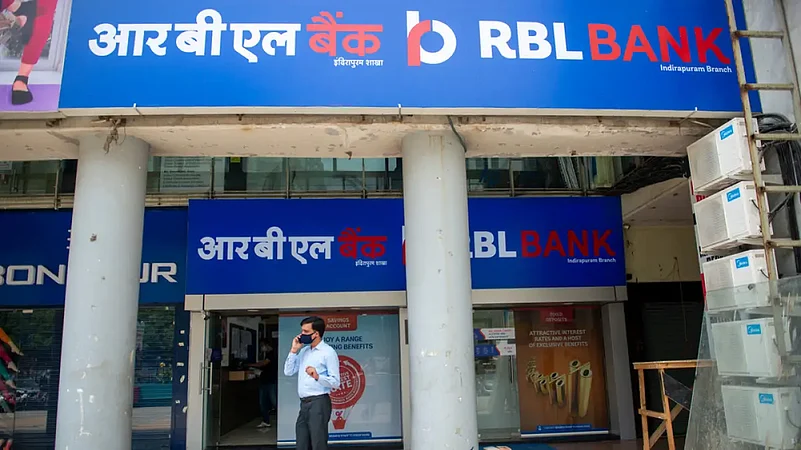Despite having the highest credit card portfolio in terms of retail assets at over 42 per cent, private sector lender RBL Bank does not see much impact on its margins after the RBI increased the risk weight on unsecured lending.
Following a massive rise in unsecured lending and delinquencies, the Reserve Bank on November 16 tightened the norms for unsecured consumer credit, asking banks and NBFCs to assign a higher risk weight.
As a result, it has increased the risk weight on unsecured consumer loans by 25 percentage points to 125 and to 150 for credit cards. This had analysts pegging the capital cost, on banks alone, going up at least by Rs 84,000 crore.
Advertisement
"Our capital (CET 1 ratio) cost will go by 60 bps because of the RBI action, but the impact on our margin will be negligible at 1-2 bps only," the bank's chief executive and managing director R Subramaniakumar told reporters on the sidelines of the IBA-Ficci-organised national banking summit here on Wednesday.
The bank's capital adequacy ratio stood at 15.15 per cent as of Q2 FY24, excluding Q2 FY24 profit, and its net interest margin stood at 5.54 per cent. Its credit cost stood at 47 bps, which, going by Subramaniakumar's own admission, will be at least 107 bps with the higher risk weighting.
Advertisement
His comments on the margin impact are surprising, given the massive 60 bps spike in its credit as the nation's largest lender SBI sees its credit cost going up by 10-12 bps while the impact on the margin will be 3-4 bps despite having a much lower exposure in percentage terms to its total assets of over Rs 33 lakh crore.
RBL Bank has Rs 18,572 crore in credit card outstanding as of Q2 and provided for more than the regulatory mandate, so there is no hit on this, he said, adding the credit card book is profitable but did not share the absolute amount.
At Rs 18,506 crore, its credit card AUM is the highest in the industry as its total retail portfolio was only Rs 44,092 crore, which grew 35 per cent in Q2 when the bank had reported Rs 331 crore in net income. This means its credit card book is more than 42 per cent of the total retail exposure.
The bank, which had one of the worst attrition rates in the industry - close to 40 per cent spiked after the bank went nearly belly up in late 2021, Subramaniakumar said much of the problem has been contained and in Q2, the attrition level came down by almost 8 per cent to around 30.
Advertisement
"It has been decided to increase the risk weights in respect of consumer credit exposure of commercial banks (outstanding as well as new), including personal loans, but excluding housing loans, education loans, vehicle loans and loans secured by gold and gold jewellery, by 25 percentage points to 125 per cent," the RBI circular said.
The new regulations, however, will not be applicable to housing loans, education loans, vehicle loans and loans secured by gold and gold jewellery, it added.
A higher risk weight means that lenders need to set aside more funds as a safety net for consumer loans, which could make such credit more expensive. It restricts banks' lending capacity as they have to set aside more funds for solvency.
Advertisement
A similar raise has been effected in the case of credit card receivables, as per the circular, on 'regulatory measures towards consumer credit and bank credit to non-banking financial companies too. As a result, the risk weights on credit card exposures now have been increased by 25 percentage points to 150 per cent and 125 per cent for banks and NBFCs, respectively.
The bank credit outstanding to the personal loans segment was Rs 48,26,833 crore as of September 2023, up nearly 30 per cent over the same month of 2022.
On bank credit to NBFCs, the circular said the risk weights on such exposures of banks have also been increased by 25 percentage points (over and above the risk weight associated with the given external rating) in all cases where the extant risk weight as per external rating of NBFCs is below 100 per cent.
Advertisement
The RBI also asked all the entities regulated by it to review their extant sectoral exposure limits for consumer credit and put in place, if not already there, Board approved limits in respect of various subsegments under consumer credit.
"In particular, limits shall be prescribed for all unsecured consumer credit exposures," the circular said.
Further, all top-up loans extended by regulated entities against movable assets, which are inherently depreciating in nature, such as vehicles, should be treated as unsecured loans for credit appraisal, prudential limits and exposure purposes.
"The immediate impact of the enhanced risk weights is the excess capital, now, that banks would require. As per our calculation, the banking industry needs Rs 84,000 crore of excess capital," SBI Research had said last week, while global rating agency S&P had pegged the credit cost on the system will be 60 bps higher.
Advertisement
Unsecured personal loans and credit card debt have risen by 26 per cent in the 12 months ending September 2023. Unsecured loans are about 9.8 per cent of total loans in the banking system as of September 2023.















 Just one email a week
Just one email a week